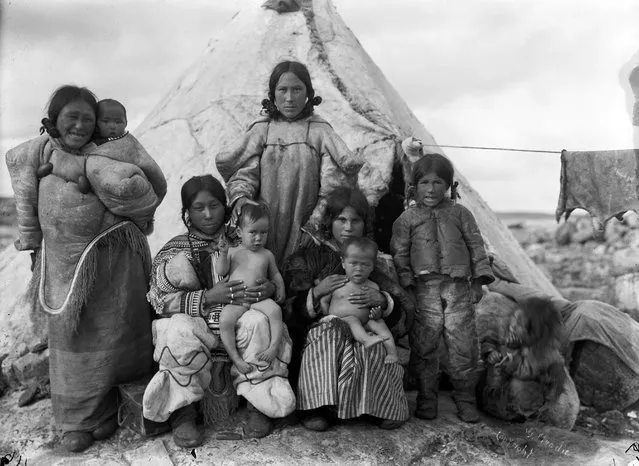
Geraldine Moodie overcame harsh conditions to become western Canada’s first professional female photographer, capturing beautiful images in the country’s most remote regions. An exhibition, “North of Ordinary: The Arctic Photographs of Geraldine and Douglas Moodie”, is at Glenbow, Calgary, 18 February – 10 September. Here: Inuit women and children at summer camp, Fullerton Harbour, Nunavut, August 1906. (Photo by Geraldine Moodie/The Guardian)
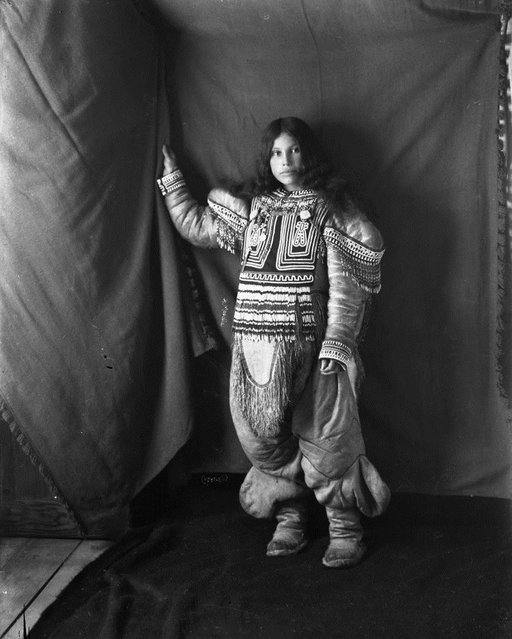
Moodie was born in 1854 in Toronto, and after a move to England she met and married John Douglas Moodie in 1878, and had six children. Here: Inuit woman, Kootucktuck, in her beaded attigi. Fullerton Harbour, Nunavut, February 1905. (Photo by Geraldine Moodie/The Guardian)
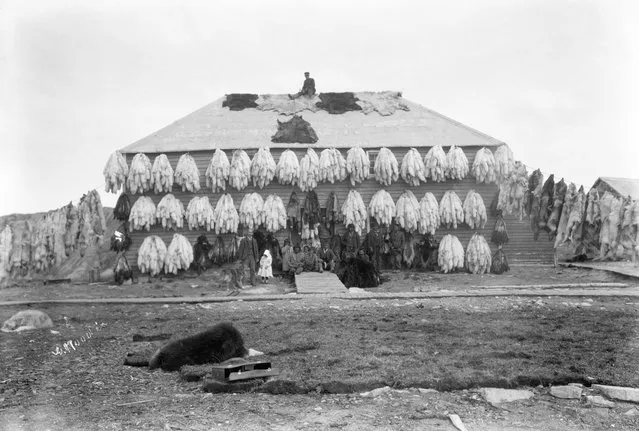
The family returned to Canada to farm in Manitoba, before John began working with the North-West Mounted Police (aka the Mounties). Here: Hudson Bay Company store covered with furs, Churchill, Manitoba, circa 1906-09. (Photo by Geraldine Moodie/The Guardian)
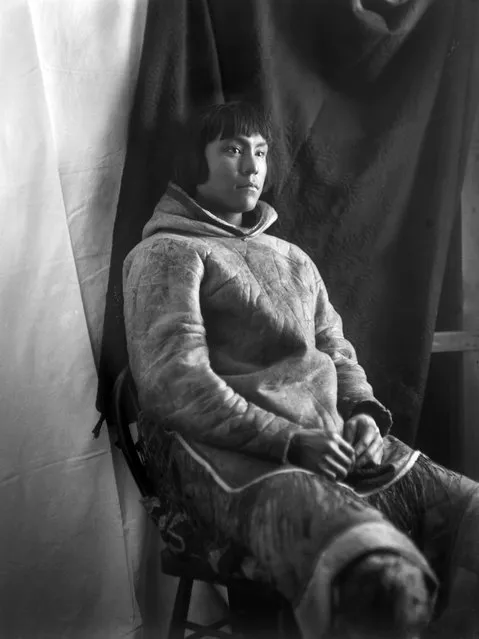
Geraldine accompanied her husband on expeditions to the police’s detachment at the now-deserted Fullerton Harbour in Hudson Bay – an obscure, frozen point in Canada’s far north in what is now Nunavut territory. Here: Inuit man, Kingnuck, of the Kinepetoo tribe, Fullerton Harbour, Nunavut, February 5, 1905. (Photo by Geraldine Moodie/The Guardian)
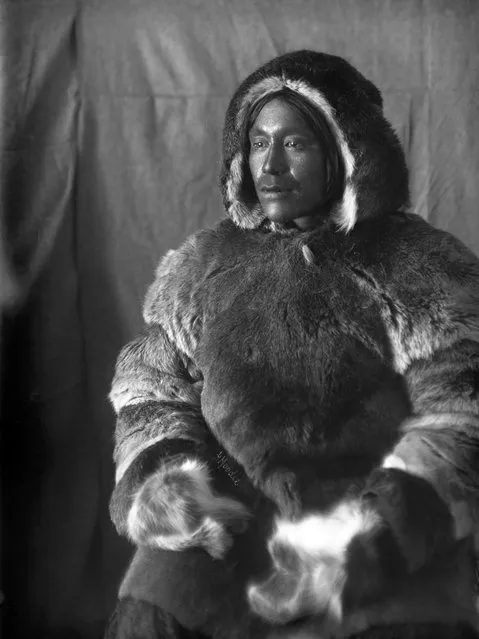
She took portraits of the local Inuit people, while he documented the landscapes he found during his police patrols. Here: Inuit man, Toopealock, of the Kinepetoo, Fullerton Harbour, Nunavut, c.1904-05. (Photo by Geraldine Moodie/The Guardian)
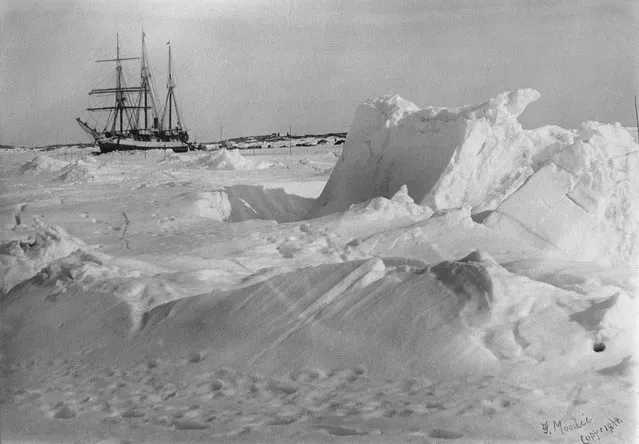
“Words cannot describe this wonderful coast, apparantly (apparently) devoid of everything that goes to make a land attractive, it still has a grandeur and beauty all its own”, she wrote in her diary. Here: DGS Arctic frozen in the ice, Fullerton Harbour, Nunavut, April 1905. (Photo by Geraldine Moodie/The Guardian)
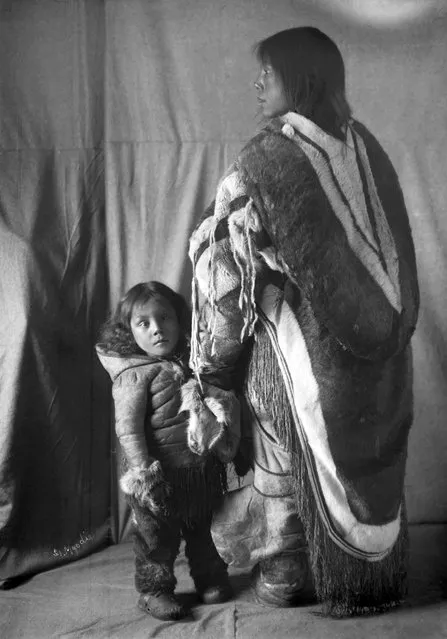
She wrote of the Inuit: “They are very bright and intelligent, her eyes were taking stock of everything all the time”. Here: Inuit woman, Mirkiook, and her child, Fullerton Harbour, Nunavut, c.1905. (Photo by Geraldine Moodie/The Guardian)
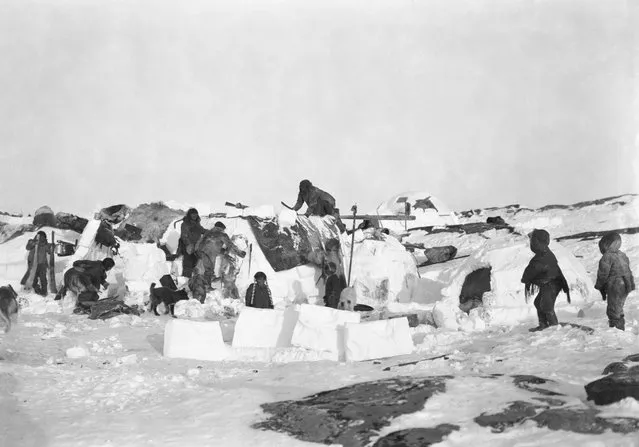
“The whole sea and land as far as the eye can see lends itself to inspire ghostly imaginations, nothing but snow & the sea in an unbroken expanse of ice and snow. In the sunshine it is beautiful, but at night it looks uncanny, the northern light shifting and changing all the time”. Here: Inuit igloos, Fullerton Harbour, Nunavut, c.October 1903. (Photo by Geraldine Moodie/The Guardian)
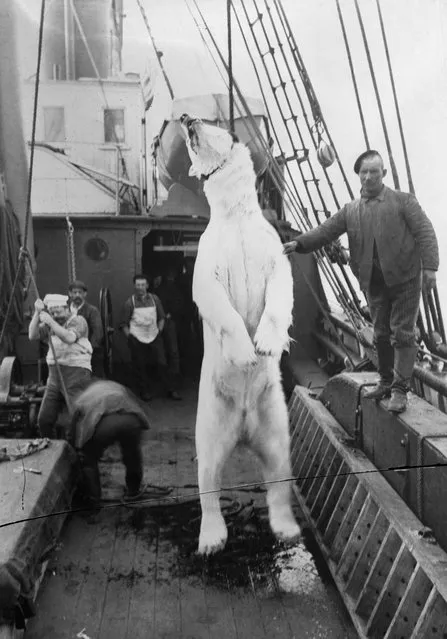
“There is a shooting and trapping mania on board at present, a good thing as it keeps them in health and good spirits”, she writes, also mentioning plenty of dances and football matches. Here: Loading a polar bear carcass on to Neptune, Hudson Bay, Nunavut, July 20, 1904. (Photo by Geraldine Moodie/The Guardian)
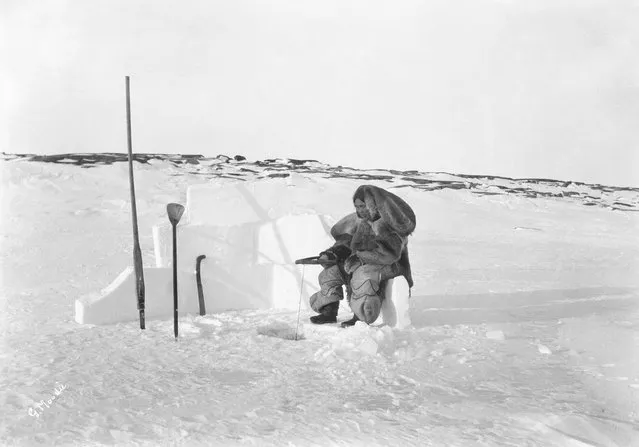
She complains of the challenges of trying to take decent photographs amid waterlogged supplies and harsh weather. Here: Inuit woman ice fishing, Fullerton Harbour, Nunavut, 1905. (Photo by Geraldine Moodie/The Guardian)
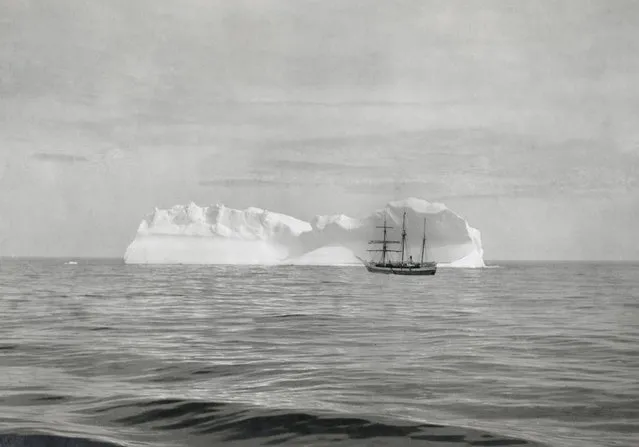
Geraldine also writes of improving her technique, while photographing this boat, the Arctic. “There has always been such a glare of snow with nothing to relieve that it gave no definition when photographed, and made a poor negative. I tried it under every condition of light, and finally found by stopping my lens very low and taking the photo when the afternoon sun was very bright, throwing strong shadows that I succeeded in getting a fine negative”. Here: Dominion Government steamer Arctic in front of an iceberg, at the mouth of Hudson Strait, Nunavut, c.1904. (Photo by Geraldine Moodie/The Guardian)
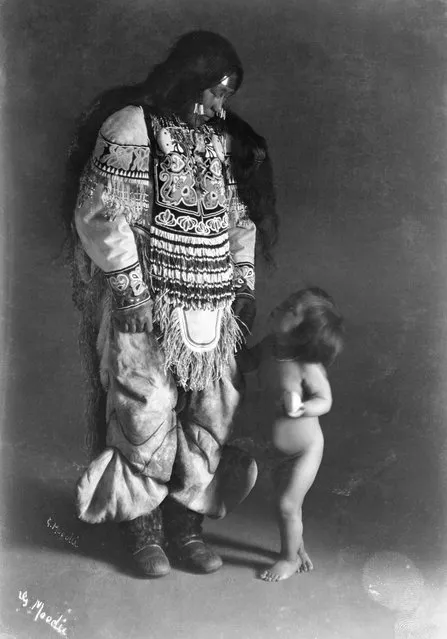
She went on to work further south in the city of Regina, Saskatchewan, and when accompanying John on expeditions for the Canadian Pacific Railway. With hundreds of emotive and lyrical images to her name, her legacy is of a true photographic artist, rather than a dispassionate documenter of rural life. Here: Inuit woman, Ooktook, with child, Fullerton Harbour, Nunavut, c.1904-05. (Photo by Geraldine Moodie/The Guardian)
17 Feb 2017 00:04:00,
post received
0 comments
